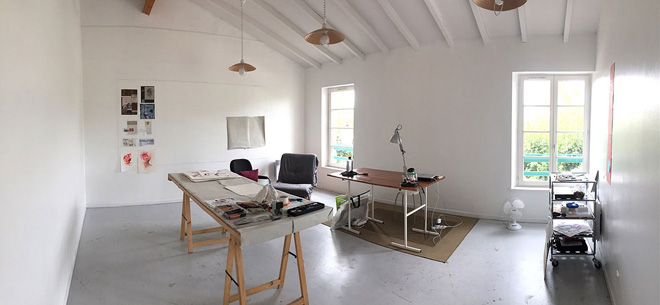
It is now mid-October. I returned from France in August, which feels like ages ago. So much has happened since, yet my four-week stay at the Moulin à Nef Studio Center is still vivid.
I should begin by describing the application process. In order to be eligible to apply for VCCA France, you must first complete at least one residency at VCCA. Unlike the residency in Virginia, the one in France does not have quite as much financial aid available, and most meals are not provided by the program. There are residency costs as well as the airline ticket to consider. Furthermore, a basic knowledge of French is necessary at this residency. Nearly everyone directly involved with the program speaks English, but most of the locals do not. The residency is not near a city; it is in a small, remote village in the south.

I will write more about the space and accommodations, but first a little bit about the setting. Upon arriving, I was immediately struck by the climate. It should have been obvious based on Auvillar’s location on the map. I knew that the village was technically in the south of France, although relatively far from the seashore. It wasn’t until I saw all the oleanders, figs, and other familiar plants lining the narrow, hilly streets that I realized I was in the Mediterranean. Despite hearing French in the streets, the atmosphere felt eerily familiar. I grew up in this climate on the shore of the Adriatic Sea in Montenegro, and immediately recognized the vegetation and colors. There was also a sense of layered histories that permeated the architecture and culture of the region.

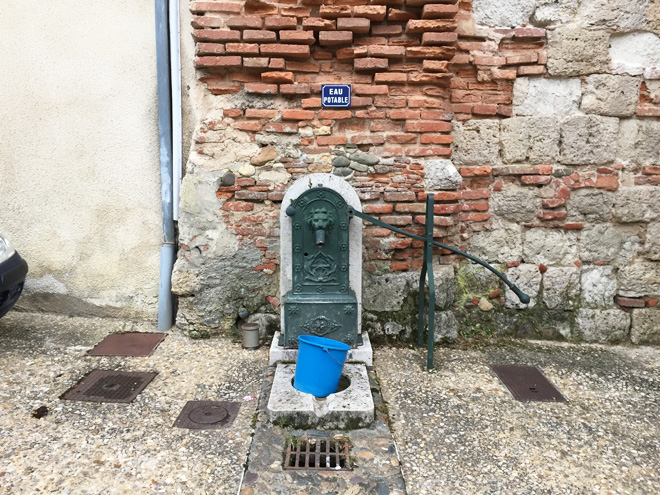
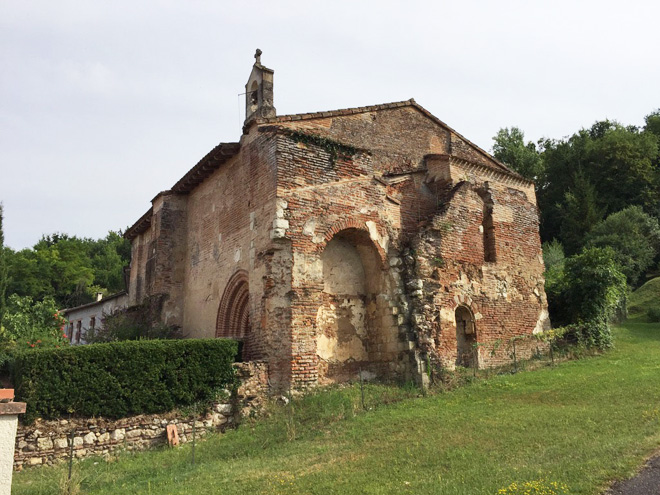
The program was designed to host four residents at a time in a 300-year-old building adjacent to a spacious and well-equipped studio building. We were on the edge of the village. A grapevine trellis covered the outdoor dining table. Everything smelled and looked incredibly fresh. Roosters crowed; the fruit was juicy and sweet; church bells rang in the distance; clothes and sheets hung on a line across the grass.
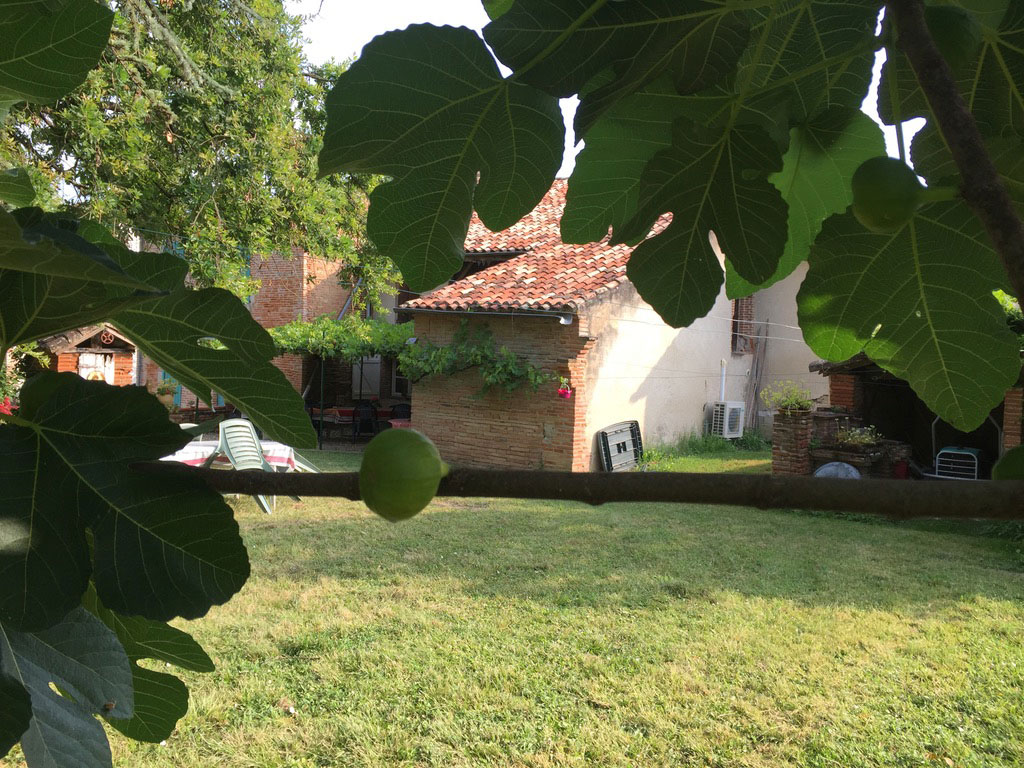
Every morning I walked up the steep hill at the break of dawn to buy baguettes and croissants from the only bakery in the village. These items would be unavailable later in the day. I often encountered pilgrims on the road, as the residency grounds were directly on the Saint James path. I had the uncanny sense of being in a French period film. It didn’t start getting dark outside until after 9pm. One of the other residents referred to this as “nuit blanche.”

Since this was a small village, there were no supermarkets nearby. We were all responsible for buying and cooking our own food, with one exception: the weekly communal dinner prepared by the residency director and friends/colleagues. This was dramatically different from the residency in Virginia where we received three meals a day. But it wasn’t a drawback—the lack of meals resulted in many adventures. Once a week, on Tuesdays, we all got in a car and drove out to the larger village, Valence D’Agen, to buy groceries. We usually made a stop at a supermarket named Casino. The other side of the village boasted an even larger Casino supermarket aptly referred to as a “hypermarket.” We found some fun things at these grocery stores, like this beer (below). The cheeses were amazing. It struck me that the eggs weren’t refrigerated, and neither was most of the milk.
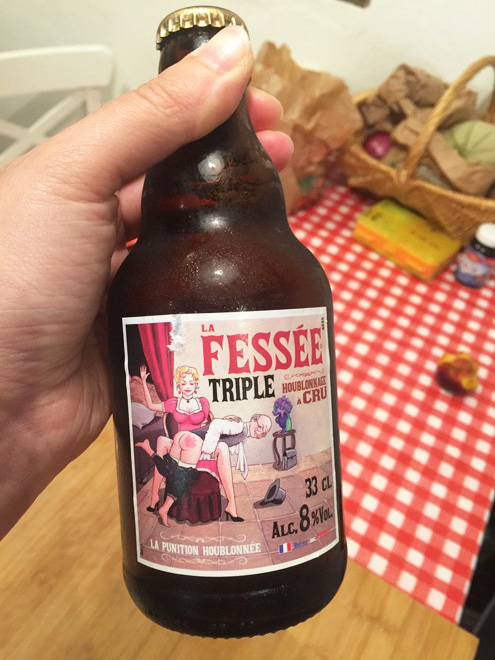
On Tuesday mornings, Valence had a very large outdoor farmers’ market spilling out onto the side streets with vendors selling everything from cantaloupes, tomatoes, lettuce, potatoes, many varieties of olives, black truffles, desserts, sausages, strange fancy cheeses, bread, bags and purses, wind-up toys, mountains of straw hats, baseball caps and hoodies with “Chicago” and “New York” printed on them, handmade cards, dresses, shirts… Most vendors did not speak any English. This meant that we had two options for communicating: either French, or by an animated game of charades—that is, pointing and gesticulating. I had absolutely zero knowledge of French before I applied for this residency, so charades was my only option. I couldn’t say “What is your name?” or “What time is it?” or “How much?” I couldn’t even count to 10. Before leaving for France, I started using Duolingo and learned a few of the basics along with less useful words like “whale.” To be fair, on the day I arrived I saw a jar of salt in the kitchen with the brand name “Whale” (Baleine) printed in French. Win!

At the farmers’ market, I made every effort to combine the few French words I had learned. I mustered up the courage to walk up to a vendor and say something equivalent to “A bread. How much?” When I accidentally used the feminine article “une” instead of “un,” the baker plopped the bread on the scale, pointed at it, and said (in English) “It’s a boy!”



Cantaloupes caused me the most trouble. I walked up to a farmer who had dozens of them stacked in front of her. The cultivar was unfamiliar to me; these were small, relatively smooth, and striped. She didn’t speak any English, and I pondered ways to ask which ones were ripe. So I said, in French, “Which ones are good?” and she replied, “All of them! Something something …eat… something something …today… something something …day.” I was scared and confused. We tried exchanging a few words and nothing made sense to either of us, so I gave up and said “Four.” She carefully picked a cantaloupe and grabbed a permanent marker. She wrote the number “1” on it. Then she said “today” in French. On each cantaloupe she consecutively wrote 2, 3, and 4. This was the same day I realized that the only numbers I knew were 1-10 and 69 because of the infamous Serge Gainsbourg song. When a farmer said “sixty-something” in French, I understood. Thanks, Serge.

There were many things I needed to learn. For example, drinks—even coffee—were pricier if one chose to sit outside rather than inside at the bar. At the same time, no one left tips and it would have been allegedly considered rude and condescending to do so. I made many faux pas, especially at the roadside farm shop on the drive back from Valence. I accidentally tried to buy individual peaches when they were being sold by the crate, and was subsequently lectured by the shopkeeper with the entire grocery line of people staring and waiting. I didn’t understand a word… I also touched a large and very scary orange amanita that was not in the self-serve section. This earned me a stern look. I later found out that it was an exclusively Mediterranean species called Caesar’s Mushroom. Foregoing the orange amanita, I bought some delicious cèpes (porcini), which ended up in an omelet.
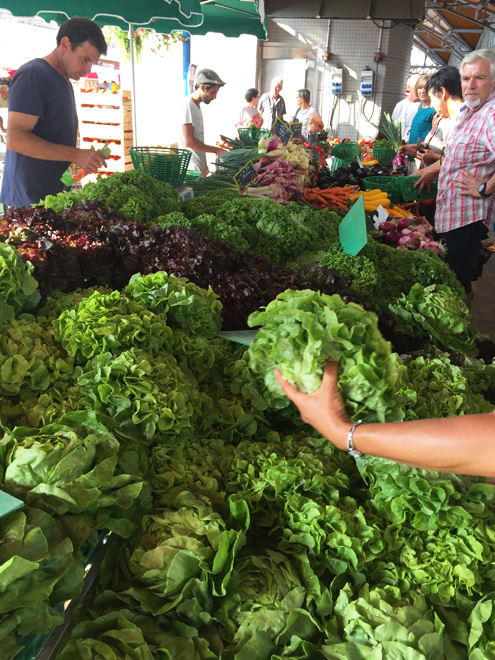
There were so many food-related blunders that I could write a much longer entry just about those. I’ll close with an incident that happened at Vival, the local corner store. When I stopped in on my way to something else, just to see what I might find before our next grocery trip, their single refrigerator was nearly empty. I did notice one remaining package of something that vaguely resembled baby spinach. Most of the produce in France looked slightly different from what I am used to, but spinach wasn’t in season so I suspected that this was something else. Furthermore, the package said “mâche,” which I knew wasn’t the word for spinach… In any case, I approached the tattooed burly man who looked quite bored at the register, and asked in French, “What is this?” …Not that I expected to understand his answer, but I thought I’d try. He paused for a second, looked at me blankly, and replied “salade.” The French words for salad and lettuce were identical, and I knew this wasn’t lettuce. So I asked again, “What is this?” This time he appeared worried and replied “salade” a couple of times while shrugging and shaking his head. He looked at an app on his phone, translated the word “salade” to the English “salad,” and showed it to me. At this point I gave up and returned the mâche to the fridge. I grabbed a bottle of beer and a bar of chocolate, and said (in English), “I think I have all the essentials.” This made him laugh.
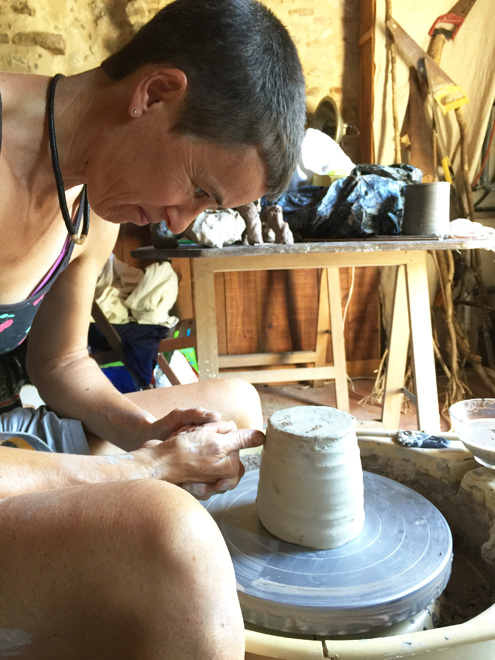
Despite the frequent confusion while navigating the culture, I had a wonderful time meeting people and socializing during breaks from the studio. I immediately hit it off with Sabine, a transplant from the Netherlands who tended the neighboring garden and helped with chores as an employee of the residency. She was interested in learning how to make pottery, having tried to teach herself wheelthrowing via YouTube. I offered to give her free private lessons, so we went to her place and I showed her some basic techniques for centering and pulling a cylinder on the potter’s wheel. She prepared lunch: the most amazing salad that included buckwheat sprouts, lentil sprouts, mâche, and nuts, among other things, served with delicious goat cheese that had a strange black crust. She also offered something she called kefir, which wasn’t milk based. It was a clear yet tart liquid. Fermenting, sprouting, and pickling was common practice. The house she lived in with her partner François was based on a tiered open-floor plan built into the side of a cliff. They had amassed a collection of artifacts, instruments, and artwork. The whole experience of visiting with Sabine was magical and memorable.
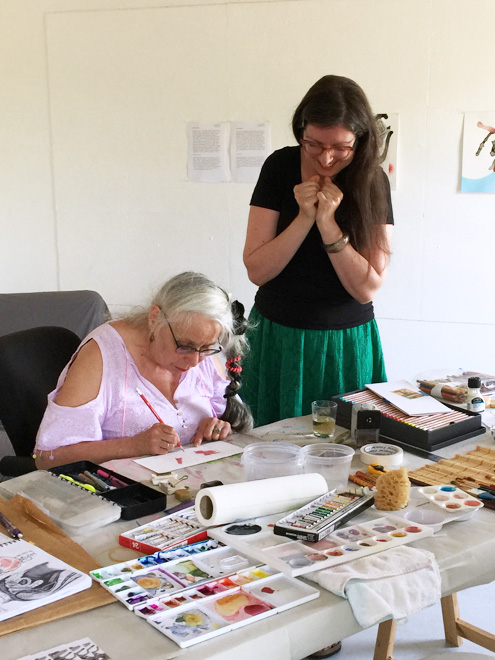
I stopped at the center of the village as often as I could. There I encountered Daniel and Nanie, a beautiful couple who ran a gallery and studio building named Arkad Centre. Nanie reminded me of Nikki de Saint Phalle with her spunk and sensibility. She didn’t speak any English and my French was absolutely minimal; we had countless funny moments trying to communicate. I was thrilled when she agreed to trade artwork with me. Her partner Daniel spoke English quite well. He was most generous with his patience and willingness to help me learn French. He taught me many words and spoke very slowly when I needed a moment to hear sounds and interpret them. At the Arkad Centre studios was Foon Sham, a DC-area artist who didn’t speak any French. He was staying in Auvillar for nearly two months. He and I checked out the sandwich place in the square and he stopped by our residency at the Moulin à Nef a few times. We had some great conversations about art and life.
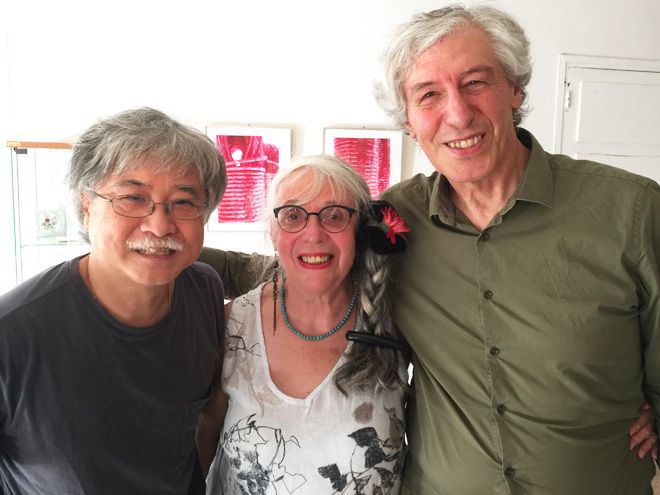
The main square had frequent concerts and events. Besides the small Sunday market, I visited two of their yearly fairs—the antique market and the artisan market. The latter blew my mind with the impressive array of metalsmiths; leather, bone, and wood workers; cobblers; potters; and even furniture vendors. Near the main square there was also a soap shop run by a fun-loving woman who was very knowledgeable about soaps, oils, and skin care. She taught me how to say the word “clay” and showed me wheat germ oil, which she described as having the unfortunate scent of a barn but wonderful benefits for skin.
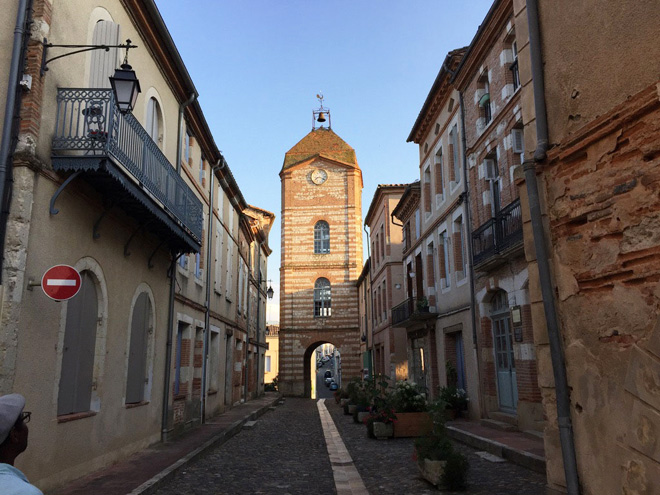
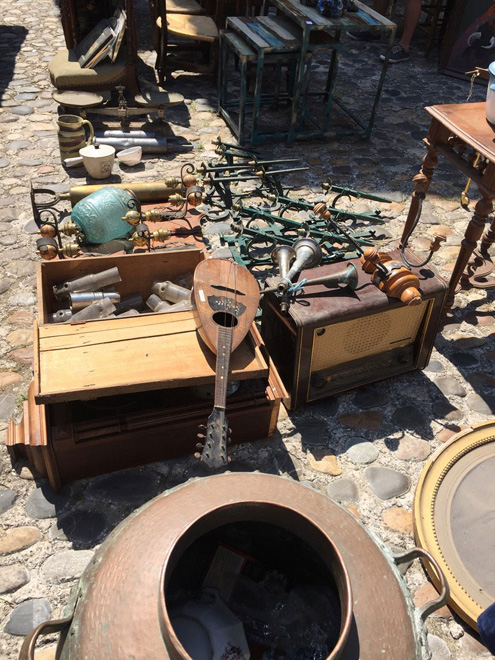
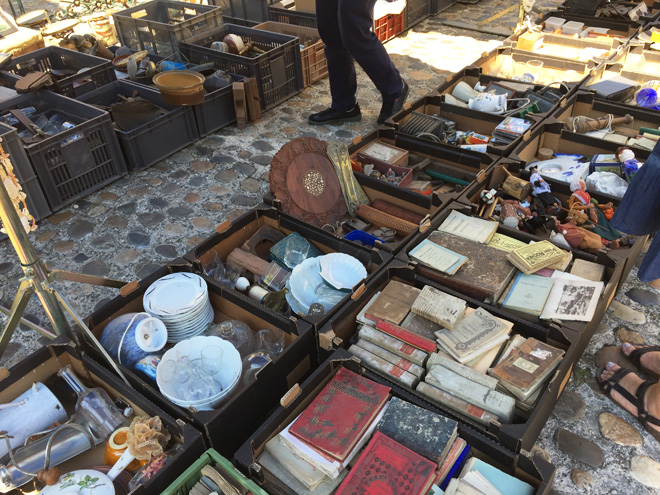
I had the rare fortune of being in France during the soccer world cup. A few of us from the residency decided to check out the local pub and watch the deciding game between France and Croatia. The pub was packed. France won and an uproar followed. People screamed and blew whistles, church bells rang, cars honked. There was general madness in the streets.
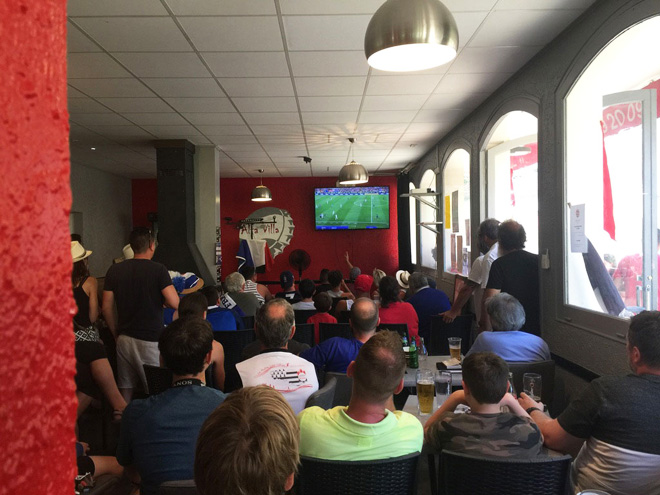
Of all the residents who came and went during my four weeks, I hit it off with painter Nicole Parcher and writer Rone Shavers. With Nicole I exchanged lengthy studio visits and we discussed our work and influences. We took walks and had very intimate conversations. Rone visited my studio several times and shared his idiosyncratic writing with me, including the story he was working on at the residency. He was outgoing and well versed in French, so I often tagged along when he went into the village.

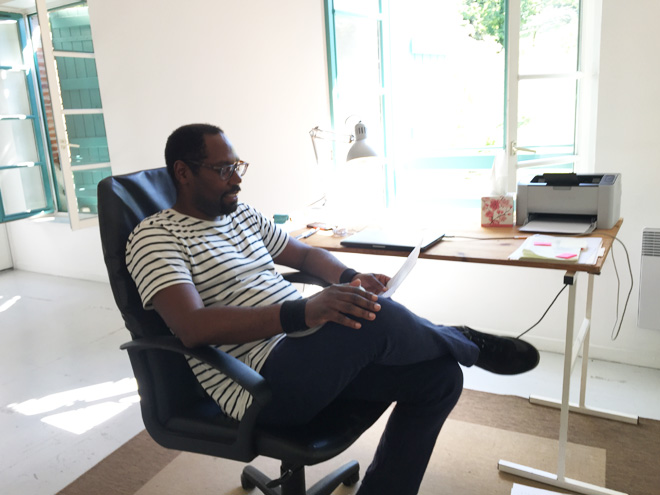
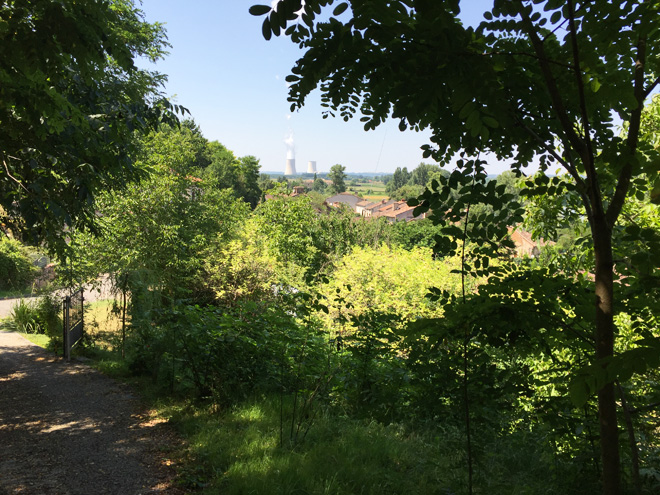
Some of the most surreal memories from this residency were the cooling towers visible from the overlook, the mushroom growing from the ceiling, and one farmer’s strange hail-proof cannon that could be heard in the distance whenever we had heavy rains. But I digress… Let me describe a little bit about the accommodations at Moulin à Nef. The bedrooms were very comfortable and quaint. Each room typically had two small twin beds along with a dresser and an armoire. The second bed was not occupied; it was available only for occasional guests. The windows throughout both the house and studios all had French doors, a versatile feature great for maintaining reasonable temperatures in fluctuation from day to night. The studios were not air-conditioned but there was AC in common areas, especially the dining room and kitchen. This was useful during heat waves. There was a washing machine but no drier; we hung our clothes on a line outside where fabric dried surprisingly quickly. With mosquitoes rampant and no screens, I found it best to keep the shutters closed until very early in the morning when the air was coolest. The studios all had standard furniture, including a day bed. The studio building also housed a printer and coffee station for general use. One of the studios had a large closet with all sorts of additional tools and materials. All in all, the residency was comfortable and delightful. I highly recommend VCCA France to anyone looking for an inspiring place to create.
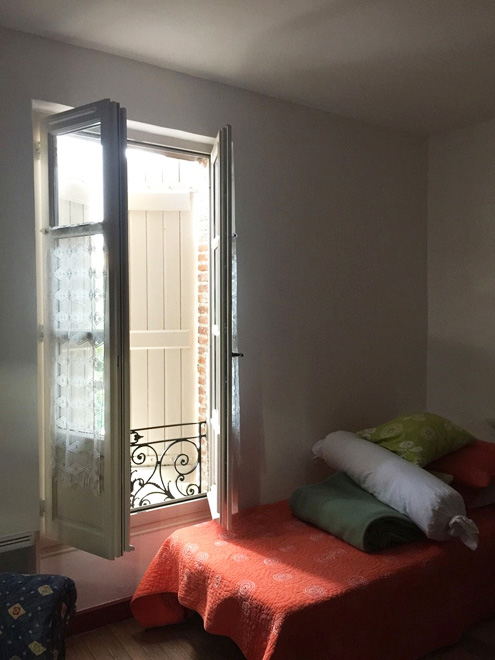
In the studio, I spent the first two weeks experimenting with various materials and approaches and finally established a steady flow of ideas inspired by a medical app for doctors and surgeons. I will write more about this new body of work in a separate entry. I hope my account of VCCA France will encourage you to apply. It’s an amazing place.

The residency and travel costs were partially funded by a grant from the Global Studies Advisory Committee and VP of Academic Affairs at Oakton College, and partially by a grant received through the VCCA.
Reading this years later, I’m transported back to my own stay in Blesle just last week, in Auvergne, where I studied French Puy lace-making. I’ll send you photos.
Wonderful to read, Vesna, and the photos are beautiful!
Hi Vesna
I just re-read this and was transported back to summer. What a lovely account of Auvillar and your stay. I hope that you’ll return some day. All the best to you!
OMG those Amanitas look so fresh and gorgeous! I want some NOW. Those are some very pristine-looking brains as well!
Hi Vesna,
Thanks for bringing back such a great memory! I was at Moulin a Nef two years ago, and had your studio 🙂 (wasn’t it the best??)
Your description of your sad French at the market totally mimicked my own as well. Next time, I will start Duolingo a bit earlier.
Cheers,
Linda Laino
Thanks, Vesna, for writing this! It’s such a vivid description of the place, and it’s definitely made me want to apply! I hope you are doing well. 🙂
Thanks, Vesna! I feel as if I just had a wonderful visit to Auvillar! I’m so happy that you were able to be there.
Nice account Vesna ! And super photographs. We posted it on the VCCA-France facebook page.